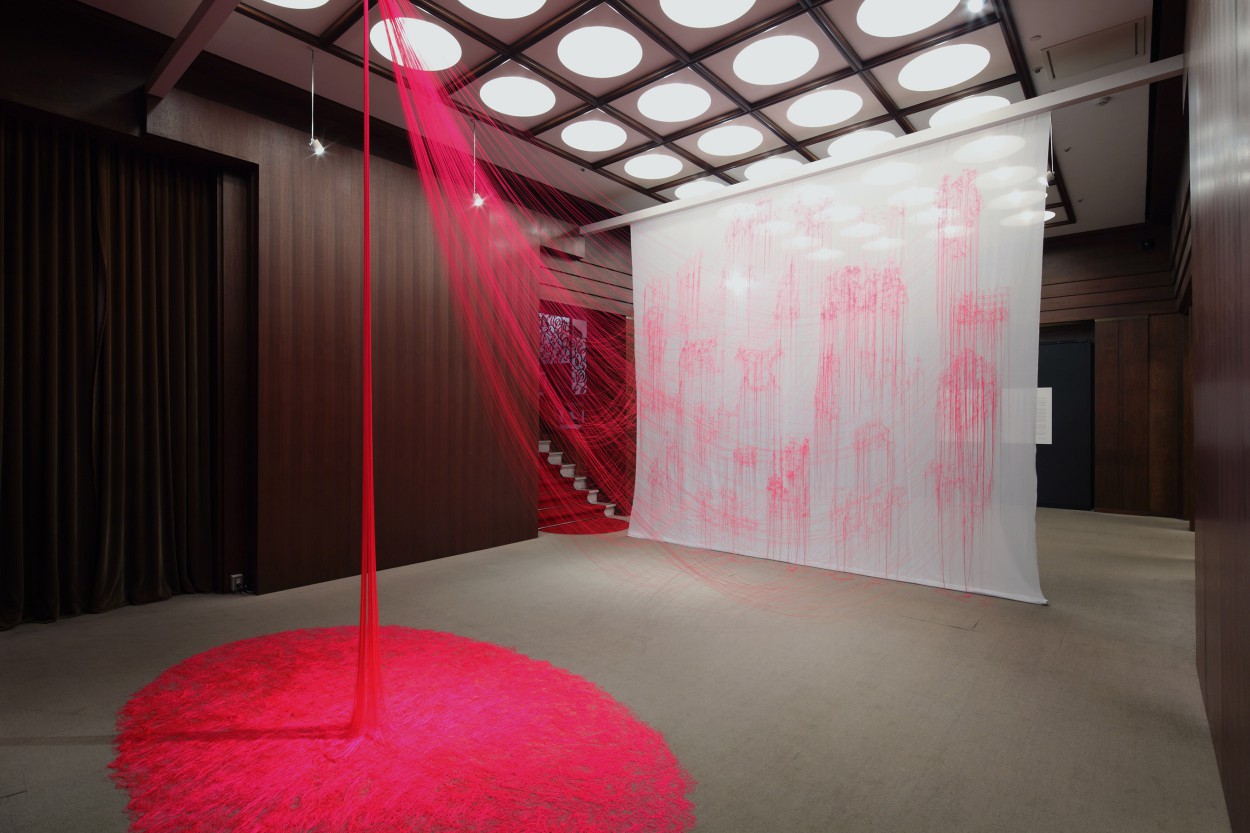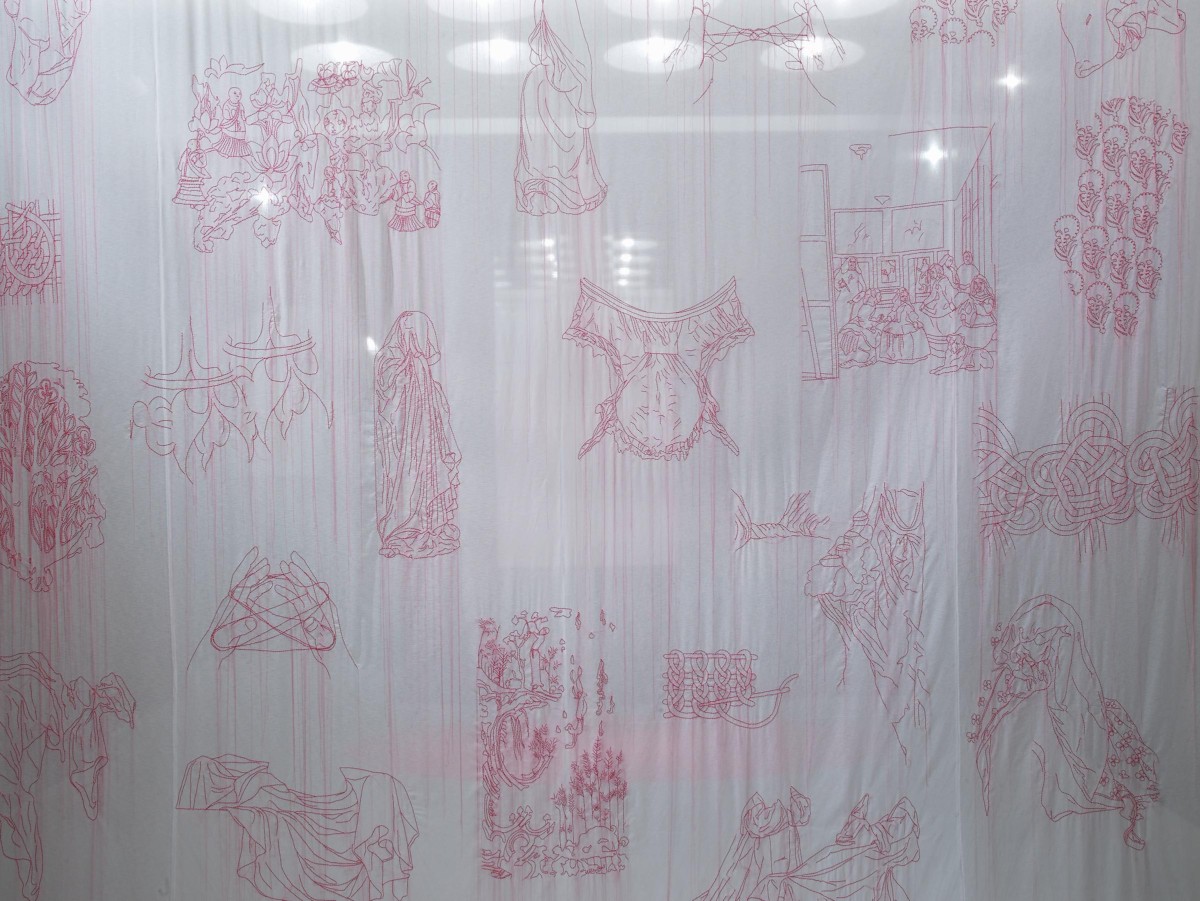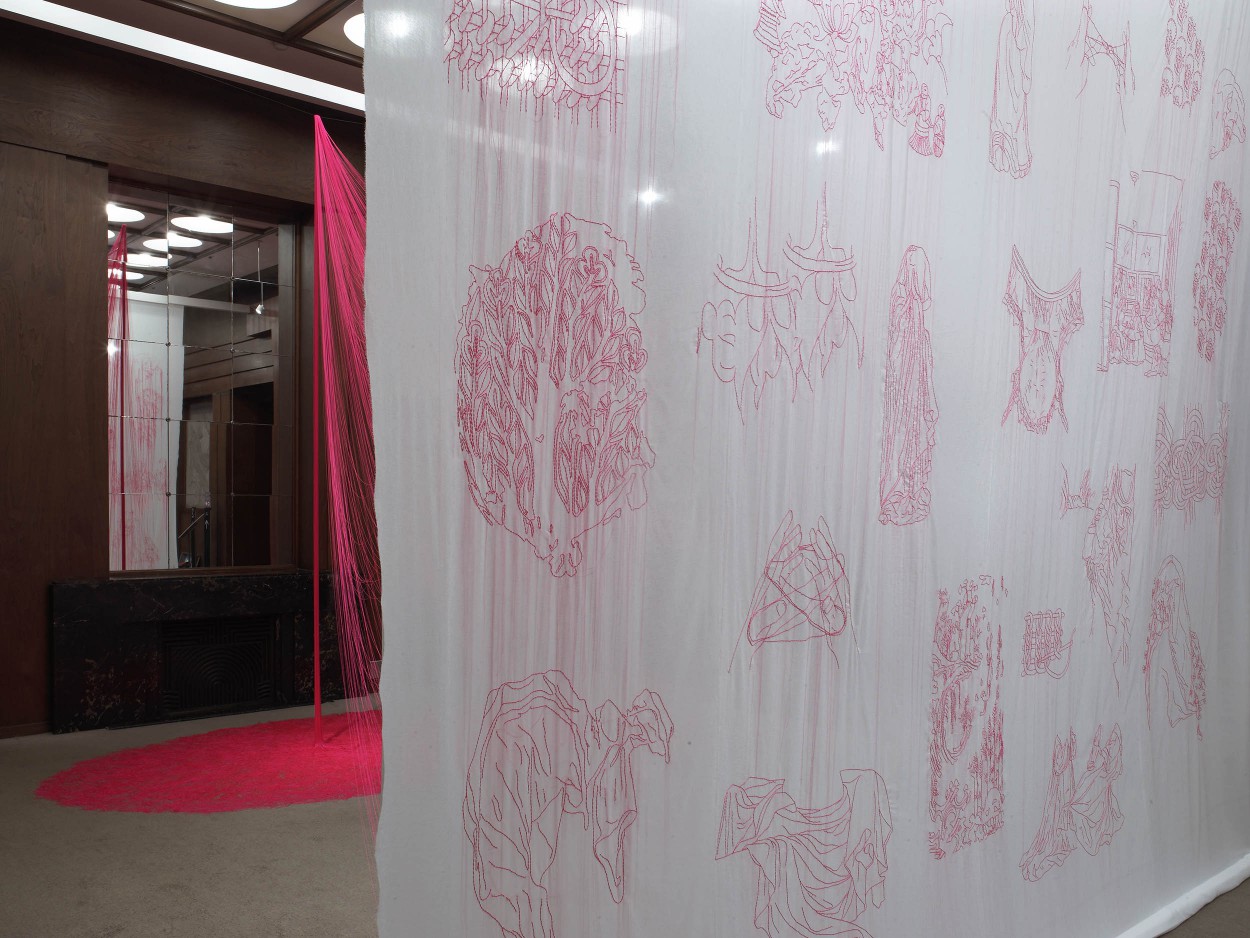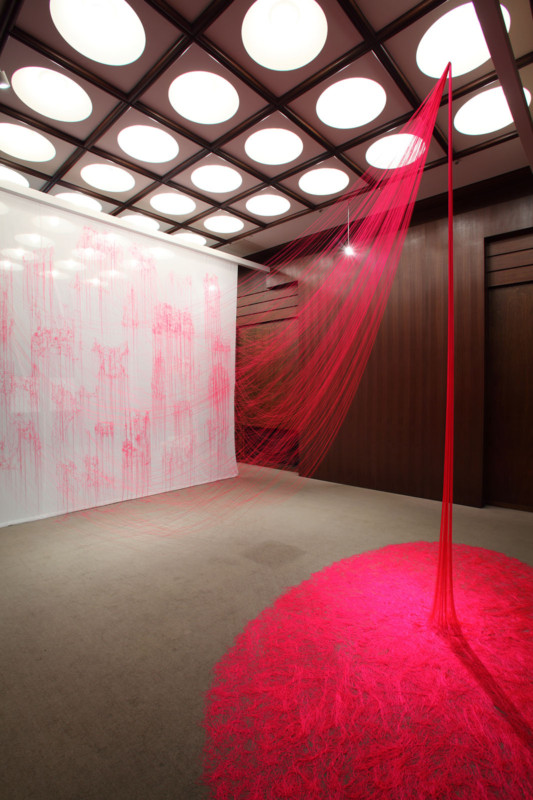
The images featured;
Mourner No.21, Sculpture, Claus Sluter (France,15C)
Las Meninas, Baroque painting, Diego Velázquez (Spain,17C)
Leather clothes (Ancient Egypt, Unknown)
Cat’s cradle (the game)
Stand cover, silk with kyokechi-dyed designs of flowering trees and paired-birds (Shōsō-in temple, Japan, 8C)
Oshira-sama, Indigenous (local religion) god, (Japan, Unknown)
Calico pattern (India,18C)
Hermes and the infant Dionysus, Greek sculpture, Praxiteles (ancient Greek, Unknown)
Wild boar, ancient cray figure (Japan, 5C)
God wooden image (Japan, 12C)
Embroidery on silk, Tenjukoku (Heavenly Paradise) scene (Chugu-ji temple, Japan, 7C)
Illustrations of knitting (United States, 20C)
Landscape painting (China, 17C)
Rococo Tapestry designed by François Boucher (France, 18C)
Traditional knot (Japan, 20C)
Ceramic pattern (Korea, 16C)
Tamamushi Shrine, miniture shrine (Hōryū-ji temple, Japan, 7C)
Ex-Voto de 1662, Baroque painting, Philippe de Champaigne (France, 1662)
Louis XIV, Baroque painting, Hyacinthe Rigaud, (France, 18C)
The threads extending from embroideries are forming a fluorescent-pink puddle behind of the cloth. On the front side, there are 25 embroidery images, referring to various fine arts and non-art such as ancient sculptures, masterpieces of European painting, cat’s cradle (play), ancient Egyptian clothes, a Chinese landscape painting, a painting of Japanese ancient furniture, illustrations of knitting in the present period and so on. These motifs are gathered intentionally across the realms of high art and non-art because I wanted to look into the “fountain of creation” itself and connections behind the artificially imposed stratification of art as painting, sculpture, craft, design, non-art, music, dance, poem, performance, writing and so on.




